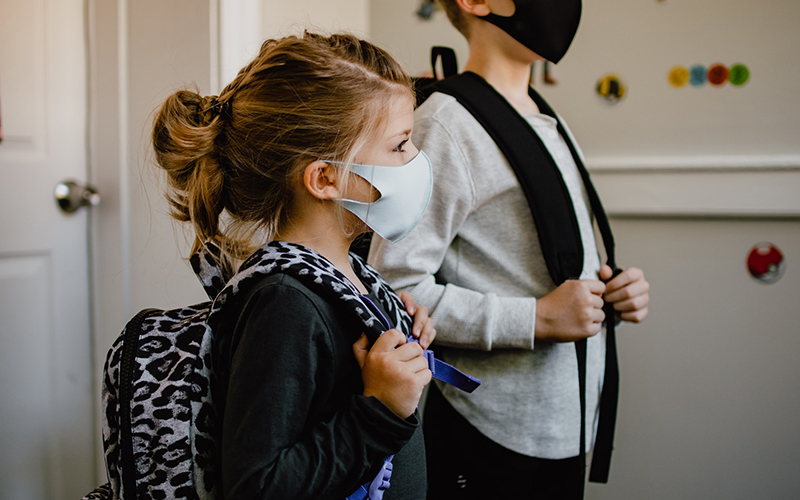
West Australian children as young as Year 3 are now turning up to school in masks, presenting a new challenge for kids, parents and schools.
As a dad I know how hard it can be to help kids understand and follow new routines which might be annoying or uncomfortable, and I know there will be some children for whom this will be particularly difficult.
But as a paediatrician, infectious diseases and public health specialist, I also know how wonderfully adaptable children can be, especially when we are patient, sensitive, and realistic, and when we help them to understand we’re doing something because it’s the safest thing to do.
Policy decisions are never straightforward when dealing with something as serious and challenging as a pandemic. Any decision made against this backdrop will always balance the risks and benefits.
So what are the benefits here?
We have good data from overseas that masks reduce transmission of respiratory viruses including COVID-19.
One US study showed non-mask-wearing schools were almost four times as likely to have a COVID outbreak than schools where students wore masks. Similarly, the rate of new COVID cases in schoolkids following school re-opening was double in areas without masking at schools compared to those with masks. Another study in German schools found similar protection from mask wearing.
Although much of the data about mask-wearing effectiveness is pre-Omicron, there is no real-world data to suggest mask wearing works less well against Omicron than previous variants. It remains the case that any mask is better than no mask for kids and adults.
Many people have questioned the point in young children wearing masks when we know COVID – especially Omicron – mostly results in mild, if any, illness in children.
Even though children are at lower risk of severe infection, a small number do become very unwell and some experience prolonged symptoms. Approximately 1 in every 2500 children experience the very serious inflammatory condition MIS-C.
In schools, mask wearing reduces the rare but real risk of serious illness in children, along with the risk of transmitting to other children and teachers, and of passing COVID to relatives and community members.
Equally importantly, mask wearing reduces the risk of outbreaks, with children and teachers having to isolate as close contacts – outbreaks which can disrupt vital learning and socialisation.
The more face-to-face learning we can preserve, the better for children's education, wellbeing, and development. Although useful when necessary, online learning is neither as good nor – with some 1.3 million Australian homes not connected to the internet – as equitable as face-to-face learning.
Although many children aged 8 or under adapt easily to masks, some find them difficult to tolerate. Some will have a strong reason to not wear one and schools can be flexible in how they manage this, e.g., by giving children struggling with extended mask wearing short breaks outside without masks.
What about concerns that mask wearing may interfere with communication and speech development? The data I’ve seen suggest children can pick up cues and communicate pretty well with masks on. While not ideal, it is a balance between the potential drawbacks of wearing a mask versus not wearing a mask, including disruption to face-to-face learning and socialisation at school.
These next few weeks will be challenging for our whole community, including children and schools. The important thing to remember is these measures are short term – do this well, and our kids won’t be in masks for long, and neither will we.
(For sources and links to these studies and tips on helping children to wear masks see The Kids Research Institute Australia fact sheet on Masks for Kids.)
This opinion piece was first published in The West Australian.
